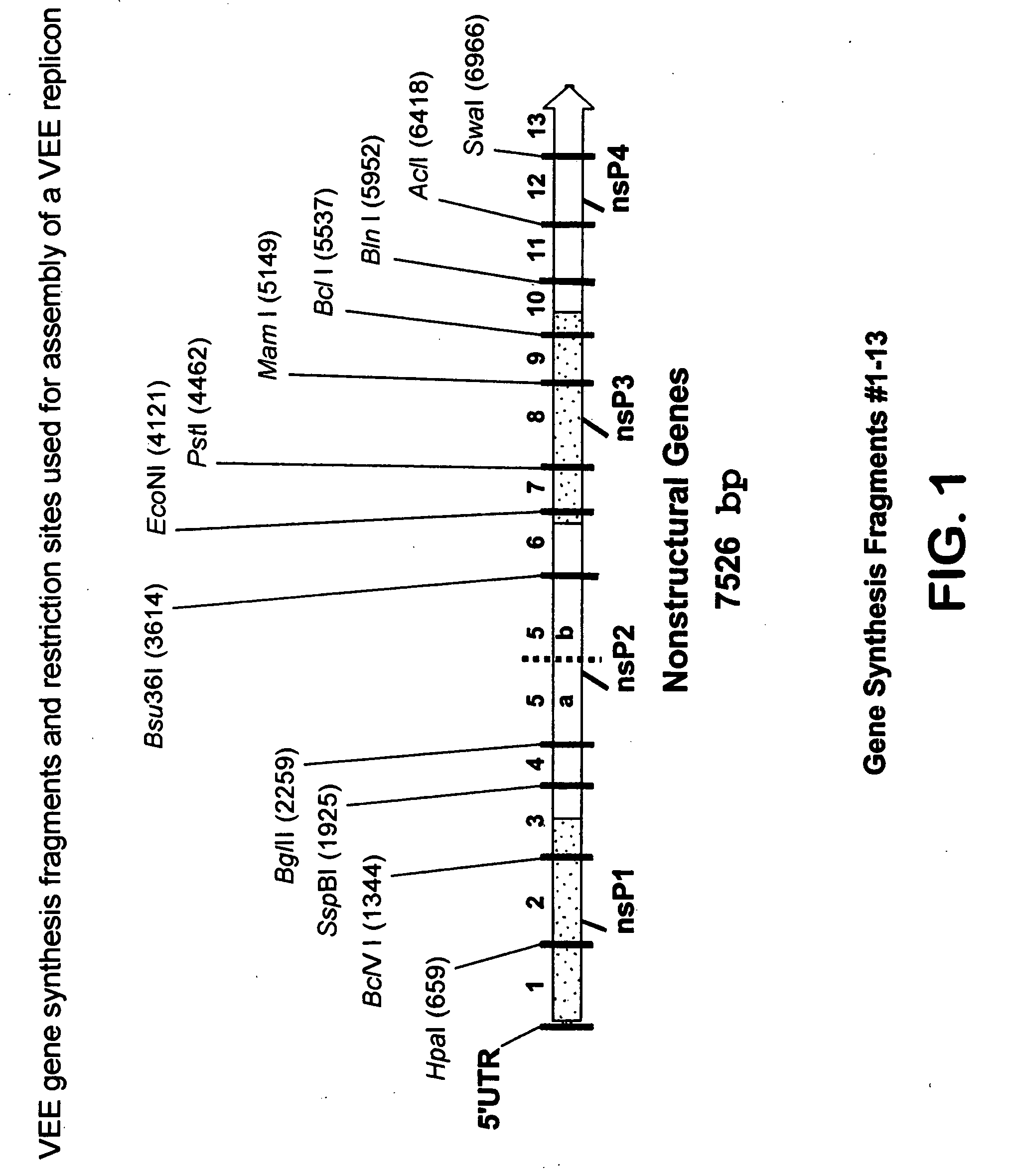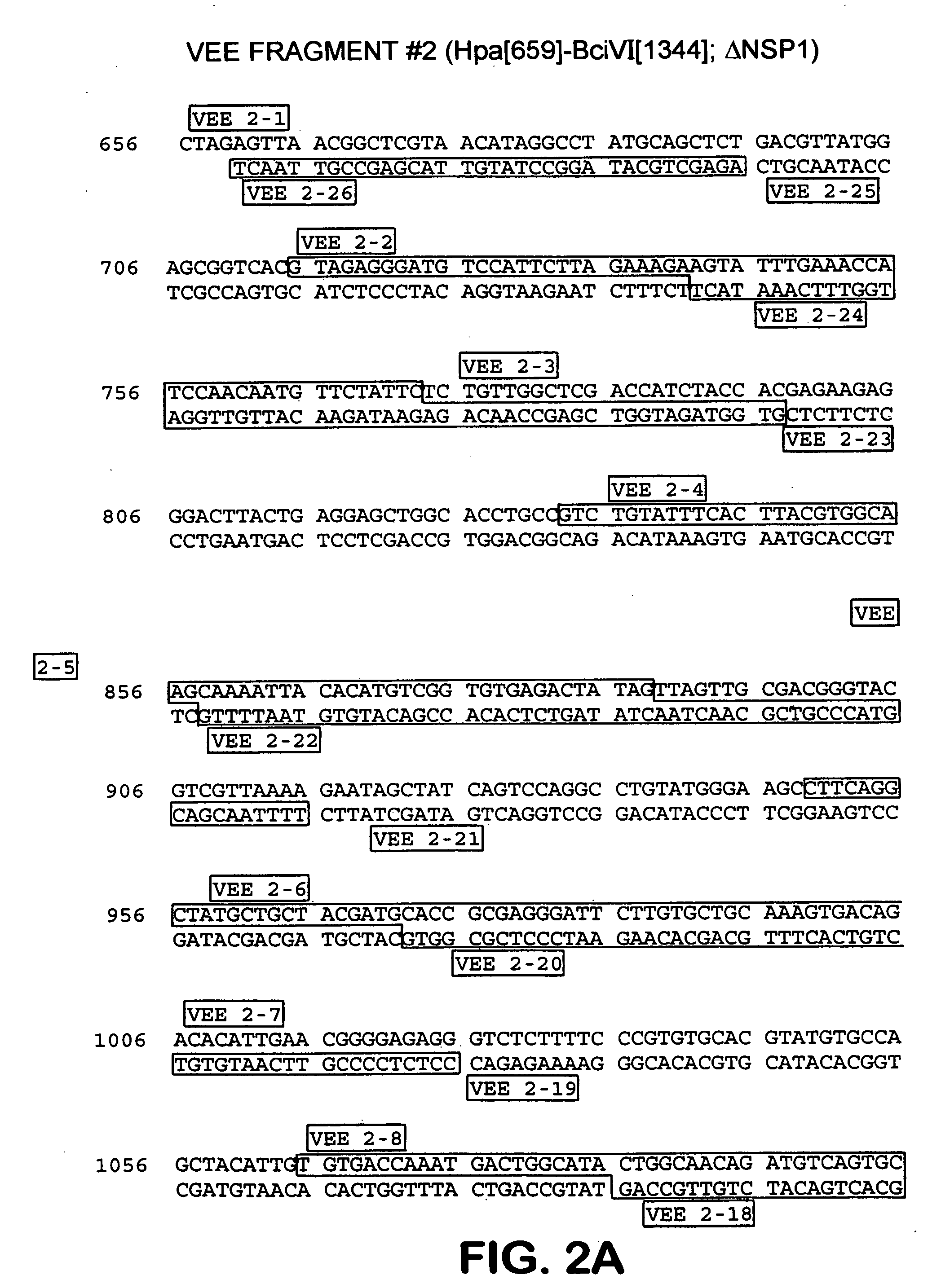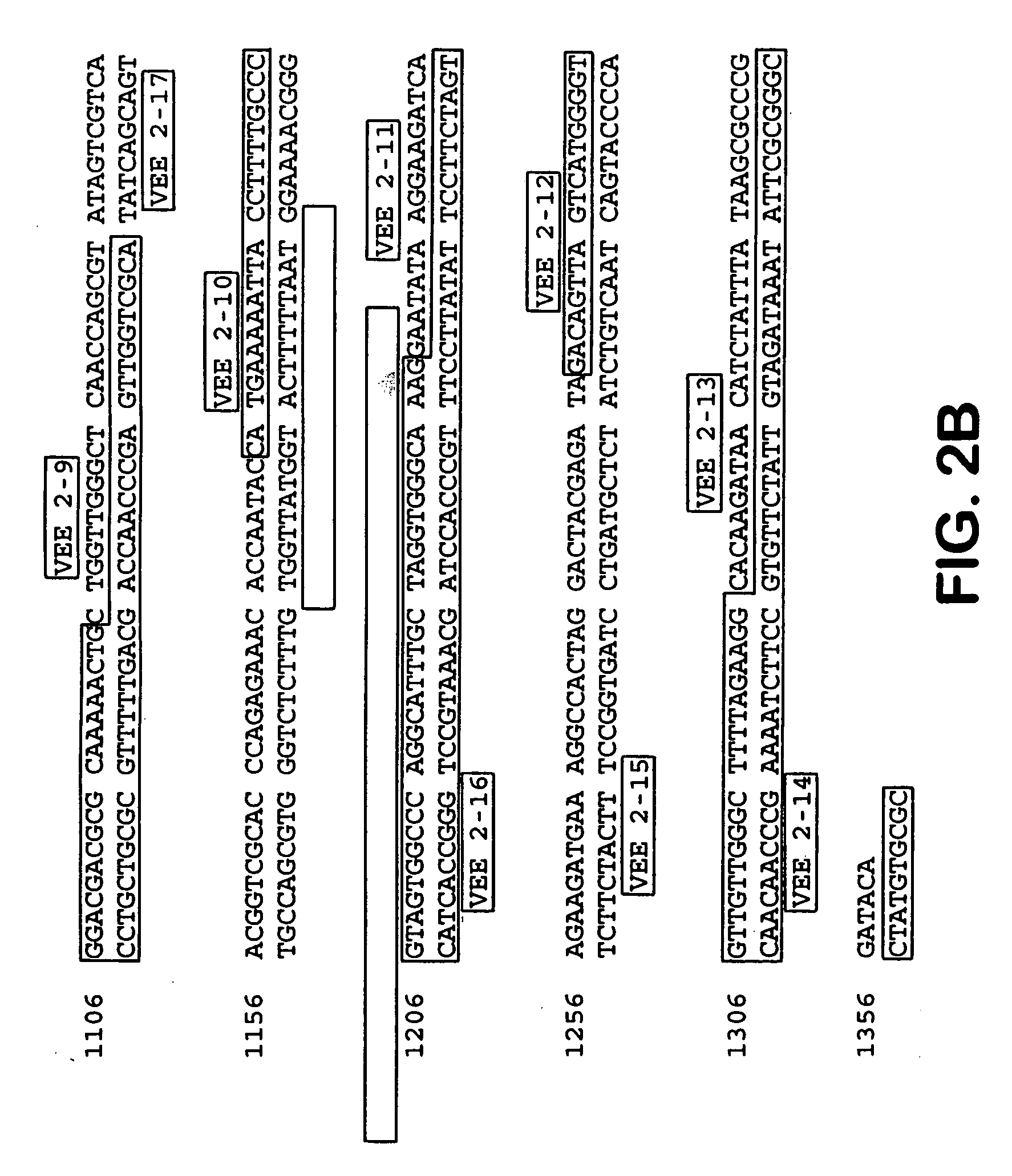Chimeric alphavirus replicon particles
- Summary
- Abstract
- Description
- Claims
- Application Information
AI Technical Summary
Benefits of technology
Problems solved by technology
Method used
Image
Examples
example 1
Construction of a VEE Derived Replicon Vector
[0166] In order to construct VEE derived replicon vectors and defective helper packaging cassettes for use in producing chimeric particles, it was necessary to first synthesize complementary DNA corresponding to the entire VEE genome. Based on previously published sequence from the wild-type Trinidad Donkey strain of VEE (GENBANK, L01442), (hereinafter VEE-TRD) the entire 11,447 genome was synthesized and cloned in multiple fragments using overlapping oligonucleotides. Nonstructural protein gene clones were used for assembly of a replicon vector, while the structural protein gene clones were used for assembly of defective helper packaging cassettes.
[0167] The sequences encoding VEE-TRD nonstructural protein genes were analyzed for suitable unique restriction cleavage sites that would subdivide the region into fragments of practical length and which could be conveniently used for final assembly of the complete replicon vector construct. ...
example 2
Construction of Alphavirus Defective Helper Constructs
[0175] Prior to construction of defective helpers (DH) of the present invention for use in generating hybrid structural protein elements and chimeric alphavirus particles, previous existing SIN based defective helper packaging cassettes (Polo et al., 1999, ibid; Gardner et al., 2000 ibid) were first modified. To generate these new SIN cassettes, plasmid SINBV-neo (Perri et al. (2000) J. Virol. 74:9802-9807) was digested with ApaI, treated with T4 DNA polymerase to blunt the ApaI generated-ends, and then digested with BglII and BamHI. The 4.5 kb fragment, which contained the plasmid backbone, the SIN subgenomic promoter, SIN 3′-end, synthetic polyA tract, and the HDV antigenomic ribozyme, was gel purified with QIAquick gel extraction kit and ligated to a 714 bp fragment containing an SP6 promoter and SIN tRNA 5′-end, obtained from plasmid 47tRNA BBCrrvdel 13 (Frolov et al. (1997) J. Virol. 71:2819-2829) which had been previously ...
example 3
Generation of Alphavirus Replicon Particle Chimeras with Hybrid Capsid Protein
[0194] In the case of hybrid capsid protein using elements obtained from both SIN and VEE, a series of hybrid capsid proteins were constructed containing the amino terminal (RNA binding) portion from SIN and the carboxy terminal (glycoprotein interaction) portion from VEE. Additional constructs with the opposite portions also were derived. The site at which such portions were fused varied by construct and necessarily factored into account the differences in overall length of these two capsid proteins, with SIN capsid being 264 amino acids and VEE capsid being 275 amino acids. Sites of fusion to generate the capsid hybrids are indicated in the table below, as well as in FIG. 4.
Name of capsid chimeraNH2-terminusCOOH-terminusS113VSIN(1-113)VEE(125-275)S129VSIN(1-129)VEE(141-275)S127VSIN(1-127)VEE(139-275)S116VSIN(1-116)VEE(128-275)S109VSIN(1-109)VEE(121-275)V141SVEE(1-141)SIN(130-264)
[0195] Each of the hyb...
PUM
| Property | Measurement | Unit |
|---|---|---|
| Temperature | aaaaa | aaaaa |
| Temperature | aaaaa | aaaaa |
| Temperature | aaaaa | aaaaa |
Abstract
Description
Claims
Application Information
 Login to View More
Login to View More - R&D
- Intellectual Property
- Life Sciences
- Materials
- Tech Scout
- Unparalleled Data Quality
- Higher Quality Content
- 60% Fewer Hallucinations
Browse by: Latest US Patents, China's latest patents, Technical Efficacy Thesaurus, Application Domain, Technology Topic, Popular Technical Reports.
© 2025 PatSnap. All rights reserved.Legal|Privacy policy|Modern Slavery Act Transparency Statement|Sitemap|About US| Contact US: help@patsnap.com



